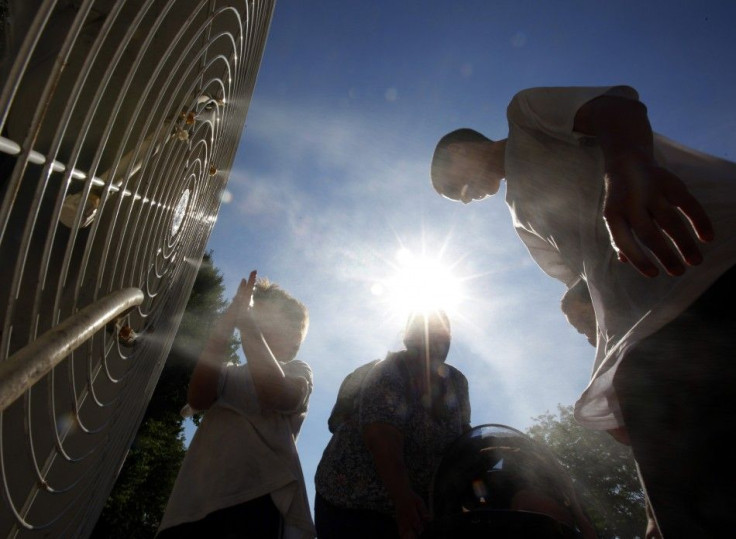Summer Heat-Related Deaths In US Expected To Triple By 2100 As Temperatures Soar: Report

The annual number of heat-related deaths in the United States is expected to triple by the end of the century, according to a new report, which predicts more than 150,000 Americans could die by 2100 from dangerously high summer temperatures resulting from climate change.
Currently, there are about 1,300 heat-related deaths in an average U.S. summer. Climate change will make that number rise to more than 4,600 by the end of the century, according to an analysis of peer-reviewed scientific data from the Natural Resources Defense Council, which reports extreme temperatures typically exacerbate already life-threatening conditions such as heat stroke, cardiovascular disease and kidney disease.
The report is based on research recently published in the journal Weather, Climate and Society, examining the impact soaring temperatures would have on heat-related deaths. Scientists predict average temperatures in North America will rise 4 to 11 degrees Fahrenheit by 2100 due to human-induced climate change, based on the much-cited assumption that carbon pollution will double by that point in the absence of stricter regulations and newer, sustainable energy resources.
In its report, titled Killer Summer Heat, the NRDC points out the rising temperatures will be felt most in cities, where dense populations and lack of green spaces can amplify the heat. In fact, the original papers analyzed by the NRDC projected that 37 of the 40 urban areas analyzed will see increases in heat-related deaths if the trend continues.
Scientists concluded the hardest-hit cities will be: Louisville, Ky (19,000 deaths); Detroit, Mich. (18,000); and Cleveland, Ohio (17,000).
Between 1975 and 2004, Louisville experienced an average of 39 heat-related deaths per summer, a figure expected to grow to 257 by mid-century and 376 by 2100. That comes out to a total of 18,988 additional deaths that the report authors say would not occur without climate change.
This is a wake-up call. Climate change has a number of real life-and death consequences. One of which is that as carbon pollution continues to grow, climate change is only going to increase the number of dangerously hot days each summer, leading to a dramatic increase in the number of lives lost, said Dan Lashof, the director of the NRDC's climate and clean air program.
Many of the cites expected to see more heat-related casualties are in the Midwest and Northeast, where the population may not be as adapted to extreme heat. For instance, southern metropolises such as Miami and Atlanta are not projected to see any changes (in Atlanta's case, heat-related deaths are actually expected to fall), likely because the temperature, while hot, is relatively stable and air conditioning is widely available.
Some of the other cities expected to see more heat-related deaths include: Boston (5,700 deaths); Chicago (6,400); Columbus, Ohio (6,000); Denver (3,500); Los Angeles (1,200); Minneapolis, (7,500); St. Louis (5,600); and Washington, D.C. (3,000).
And those figures may be conservative. According to Laschof, they do not take into account project population growth in those cities, or the increase in the number of sick and elderly people, who -- along with young children -- tend to be the most vulnerable to heat waves.
The changes are already apparent. Last summer, at least 42 states reported record daytime highs, while 49 states saw record-high nighttime temperatures, according to the National Oceanic and Atmospheric Administration. Last week, NOAA reported the 12 months that ended April 30 were the warmest on record in the U.S. since reliable record-keeping began in 1895.
© Copyright IBTimes 2025. All rights reserved.





















